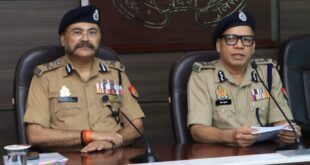(Pi Bureau)
Over the past several months and in run up to the 2017 Uttar Pradesh election, the opposition parties had begun to weave a political narrative of tarring Bharatiya Janata Party (BJP) and its mascot Prime Minister Narendra Modi in the backdrop of demonetisation, alleged intolerance in campuses and its backchannel affiliation with RSS.
This was being done for electoral capital by subtly playing up the minority and dalit themes with election round the corner and preempt emergence of BJP in the Hindi heartland, which is the most crucial state.
The political adversaries of BJP and Modi probably held the belief that harping on such erstwhile time tested agenda would galvanise the dalits, minorities, backwards and the ‘secular’ brigade against the saffron outfit and impede ‘Modi wave’ from winning UP.
It was no sooner than the electioneering started in January for polling in February-March, the top leadership of Bahujan Samaj Party (BSP) and the Samajwadi Party-Congress combine launched frontal attacks on Modi over demonetisation, which they termed as an anti-poor move.
In their public meetings, they vociferously communicated that demonetisation had rendered the disadvantaged sections of society jobless and cashless and that they ought to punish BJP and Modi for their arbitrary act. Former PM Manmohan Singh, while speaking in Parliament, had even termed the decision as “monumental disaster” and claimed it would pull down India’s growth by 2 percent this fiscal.
The opposition parties reminded people of their hardships during the 2-3 months of demonetisation and the long lines of people at commercial banks to withdraw cash or exchange their holding of demonetised cash. They earnestly hoped people would line up to vote against BJP on polling days.
Come March 11, when counting of votes for UP started, all such hopes came crashing down and instead BSP, Congress and SP were forced to bite the dust and lick their wounds.
The ‘Modi wave’ had uprooted their camps beyond their even nightmarish expectations.
While, BJP improved its tally to 325 from 48 in 2012 UP poll, BSP crashed to 19 from 80, SP-Congress alliance dropped to 54 from their combined tally of 252 in the last state election.
The opposition parties miserably failed to take cue from the local bodies polls in successive states post demonetisation, which BJP won handsomely state after state, even in states where BJP had always been a fringe player, such as Odisha.
While, much of the analysis for the landslide victory of BJP would fall in days to come, the party has definitely managed to corner a larger share of other parties’ core vote bank, while successfully retaining its own.
The organisational skills of BJP president and Modi confidante Amit Shah once again proved his utility for the party.
BJP attracted a large chunk of non-Jatav dalit votes from BSP. It managed to evoke traction of non-Yadav backward caste votes, such as Lodhs and Kurmis in this poll. Even Muslims seemed to have voted for BJP given the party’s sterling performance in even minority dominated pockets of the state. This in fact prompted BSP president Mayawati to allege that the electronic voting machiens (EVMs) had been tampered with. She even demanded countermanding of poll and sought fresh election in UP.
However, the opposition were quite right in their proclamation that there was no ‘Modi wave’. Little did they realise the wave had morphed into a Tsunami. They could never estimate the strong undercurrent, which actually was more potent than the euphemistic wave itself that helped BJP and Modi coast to victory.
 Politics Insight News Without Politics
Politics Insight News Without Politics





